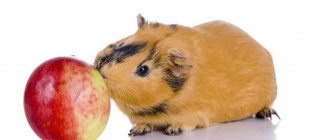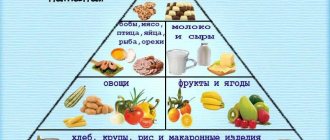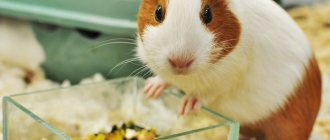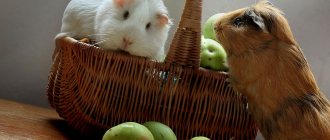Livestock » Rabbits
0
4271
Article rating
Kira Stoletova
For normal functioning of rabbits, their diet must include roughage. Every farmer should know what branches can be given to rabbits. Roughage contains the necessary components - fiber and tannin - which improve digestion.
What branches can you give to rabbits?
Also, regular consumption of roughage has an antifungal effect, as a result the functioning of the gastrointestinal tract improves and all other mechanisms work much more intensively. Tree greens contain a lot of vitamins, vegetable proteins (up to 8%), fats, digestible calcium, carotene, amino acids and nitrogen-free extractives and microelements. In autumn and winter they will replace green food, which is in short supply during this period.
What branches can be given to rabbits to diversify and improve their diet? Cherry branches are good for rabbits, and spruce or pine branches are an excellent alternative. You can also give birch trees, young animals love viburnum branches, many farmers give a mixture of sea buckthorn with maple branches. This type of roughage is very healthy. It can not only be harvested in spring and summer, but also cut throughout the year. Rabbits' incisors are constantly growing, and so that they do not cause harm to the animal, they must be sharpened.
Trees for branch food
What tree branches can be given to rabbits? Among all the listed trees, the one that grows in the garden will be more beneficial for animals. Vegetation reacts to various factors and produces its own composition of vitamins and other substances that become medicine for the area. Animals eat many types of trees with appetite. The best options for them are:
- raspberries;
- poplar;
- maple;
- acacia;
- ash;
- cherry;
- gooseberry;
- currant;
- plum.
Rowan and apple tree branches can also be given to pets: this greatly simplifies the process of preparing food. Rotten leaves must first be removed. In summer, pets love apple tree branches and eat them with appetite. The wood of these species contains more protein, vitamins and calcium than straw. In winter, animals experience a great lack of these substances, and therefore such branches are simply necessary for decorative rabbits.
Rowan grows wild almost everywhere; searching for poplar, elm and maple is also not difficult. Many people have apple tree branches growing in their summer cottages.
Branches for rabbits can be given constantly and in large quantities, it will not cause harm. At the beginning of spring, but not in summer, long-eared animals are given twigs with unopened buds as part of their diet: during this period they contain vitamins necessary for vitamin deficiency.
The benefits of branches in a rabbit's diet
Branch food has long proven its usefulness in the menu of rabbits of various breeds. It has a beneficial effect on the body of animals and is an excellent food substitute when there is a lack of hay. Rabbits love to eat fresh branches of trees and bushes - this confirms the instinctive behavior of wild representatives of this order of animals.
Rabbit breeders note the main advantages of this type of feeding:
- Significantly increases the digestibility of other feeds.
- Prevents digestive disorders, especially in the summer, when the diet of animals is literally oversaturated with green plants, which often provokes diarrhea.
- Serves as a reliable prevention of various diseases. Branch food contains not only a large amount of fiber, but also proteins, vitamins, and microelements.
- Helps treat various body disorders. Branches are a kind of natural healers (for example, a willow branch contains the glycoside salicin, which can be called a natural antibiotic). Wild animals unmistakably determine which plant to use for treatment, while domestic animals have retained the abilities of their ancestors.
- The mood and mobility of animals improves.
One of the important advantages of twig feed is its availability. If necessary, you can cut it nearby, right near your home. If you have your own garden, you can serve fresh branches to your rabbits for lunch almost all year round, even in winter. Although it is better to take care of preparing them in advance, in the spring and summer, when they are most saturated with vitamins.
The nutritional value of food from branches is quite high and largely depends on the number of leaves. At this position, the branch feed is located between the straw and hay.
Unwanted twig food
Another group of trees includes species that should not be overused. It includes:
- juniper;
- birch;
- willow;
- alder;
- oak;
- Linden;
- pine;
- spruce;
- apricot.
Oak tree branches for decorative rabbits and alder have a large amount of binding substances (tannins), with their help you can treat indigestion, which is typical in summer due to the large amount of green food and vegetable crops. In this case, you need to be careful, as animals sometimes experience constipation. Birch branches from the forest can become a diuretic for rabbits, which will subsequently lead to dehydration.
Medicinal branch food
Willow branches have bactericidal properties, and the beneficial properties of willow are good for treating diarrhea and bloating, due to the content of salicylic acid. It also has an analgesic effect. Linden and birch branches are added in the treatment of cystitis; they have an anti-inflammatory and analgesic effect, and are also used to grind teeth.
Rabbits eat any fresh produce well. The supply of pine needles as food is even more limited. It is indispensable in winter, when there are no greens and vegetables. Rabbits eat freshly cut branches of spruce, juniper and pine very well. Due to the high content of bactericidal substances and vitamins in them, there is little chance that animals will suffer from infectious diseases.
For the winter, it is optimal to prepare birch and other tree branches for grinding down teeth, otherwise a malocclusion will develop. If teeth are not ground down, they begin to grow rapidly, sometimes bulge, unfold, and even grow into soft tissue. This leads to dire consequences: at first the rabbit cannot eat properly, loses weight, and develops anorexia and related diseases. To save your pet from such a fate, you need to consult a specialist. Eared animals can cope on their own if you constantly give them twigs, and this also saves the cage from gnawing.
Useful tips
When you have found out what trees rabbits eat and what branches they provide in winter and summer, you need to understand the nuances of feeding rabbits with wood.
Some tips from experienced rabbit breeders can help you avoid making stupid mistakes and reduce the likelihood of negative consequences from eating twigs:
- Wash branches and brooms before giving them to rabbits. It is better to do this in hot water. This way you will perform two tasks at once: soften the wood and remove serious contamination from the surface of the branch;
- Use branches especially often in early autumn and spring. This will help prevent diseases; wood is a natural antibiotic. This is especially true for raspberry branches with leaves;
- When choosing branches to harvest for the winter, cut off those that have many leaves. The number of leaves is a direct sign that the branch contains a lot of tree sap;
- Avoid dry and rotting branches. And under no circumstances put branches that are covered with fungus into the enclosure. It can easily spread to the bedding, then you will have to disinfect the cage;
- Remember that animals do not eat large branches. They simply gnaw the bark off them. Therefore, it is better to choose thin rods for rabbits. Another disadvantage of large branches is that they are difficult to remove from their cages for replacement;
- Keep in mind that some branches have a diuretic effect. This means that after using them in rabbit cages you will have to clean more often. In order not to be disappointed in such food, be sure to read about the characteristics of plants;
- To better preserve the branches, cut them with a special garden pruner. A miniature hatchet will also work if we are talking about a plant with strong bark and wood.
If you don’t want to prepare plants yourself, but understand their value for your charges, you can buy wooden blocks for rodents. They are sold at any zoological store. But, if you have the opportunity to collect wood yourself, you should use it.
Prohibited branch feeds
The most important thing is not to give your pets branches of poisonous tree species, which include:
- bird cherry;
- wolf's bast;
- wild rosemary;
- elder;
- apricot;
- buckthorn.
Tree branches are dangerous for rabbits, especially decorative ones. You should not give any food thoughtlessly. Such branches contain toxic substances. Lilacs also contain illegal substances, but rabbits won't want to eat them. Stone fruit trees can be dangerous. Some farmers believe that they contain hydrocyanic acid, but many livestock breeders refute this statement, based on the fact that hydrocyanic acid is found only in the pit itself, but not in the trunk and branches.
Of course, there are farmers who take risks and give their pets a taste of this food, but this can be dangerous. It is not recommended to feed rabbits pear fruits, as they can cause bloating in the animal. This does not apply to wood, but fluffies do not have much love for pear branches.
Proper feeding of rabbits
Accustoming occurs gradually. It is not advisable to feed rabbits with twig food every day, although it is possible. After 2 weeks, it is necessary to give the animals a break of up to 10 days. If this is not done, pets eat without a break and do not know how to stop themselves. The best regime is to give branches to rabbits every other day. At the same time, you should be careful: from February, coniferous trees begin to secrete resin, which gives the branches a bitter taste, and therefore they will have to be excluded from the diet.
Coniferous breeds are advised to be included in the diet of individuals from October to March; during this period, the reserves of vitamins in rabbits are minimal.
Another advantage of feeding pine needles is the magical properties of phytoncides, which improve the quality of animal fur. When pets eat roughage, their body is filled with vitamin reserves. Spruce branches are given infrequently, as they contain a lot of essential oils. But if the animal has a respiratory tract infection, the content of spruce in the diet can be increased. Larch should be given rarely. Larch is also necessary in the treatment of the respiratory tract.
Preparation of branch forage
The greatest need for solid food arises for rabbit breeders in winter, although pets eat it with great pleasure all year round. Typically, tree branches for decorative rabbits are harvested in June, when there is a lot of young growth of branches and the foliage is still tender, and also while the rabbits have something to eat. Choose branches with a lot of leaves on them, because the wood contains more useful substances. If you prepare such food in advance for future use, you won’t have to run after it through the snowdrifts in winter.
You should not cut branches from trees growing near the road or in the city: they have accumulated a lot of toxic substances and heavy metals, this will not benefit the rabbits. The future food is cut into lengths of 50-100 cm, no more than 1 cm in diameter, and collected in a broom, hung - the food is ready. Dry the products in dry, dark rooms (attic, shed, shed). Give pets only food of appropriate quality. Animals do not gnaw branches with a large diameter, they only gnaw the bark, so it is better to sort them immediately so as not to have to clean up the remaining food later.
Rabbits wear down their teeth well on twigs, so you can save a couple of plump ones. It is necessary to take care of the branches so that they do not rot or turn yellow. Dry leaves can be crushed and added to hay. Coniferous branches should be given to rabbits only fresh. If you follow simple rules for caring for pets, you can raise healthy and active animals.
How to feed correctly
If we talk about fresh food, then in the summer you can feed rabbits with branches of any plants, except for those whose dangers were mentioned above. The only exception is coniferous species: it is better to cut them in winter and give them fresh.
As for dry branches, they are added depending on the harvesting time. Food collected in summer can be given at any time of the year.
Only young branches with soft needles can be cut from acacia. If they are intended for young animals or decorative rabbits, it is better to remove the needles first.
Do not feed animals wet shoots. If they were collected after rain or washed, they must be dried.
Brooms from branches are fixed entirely in cages. A rabbit should eat no more than 300 grams of fresh roughage and no more than 200 grams of dried food per day. It is worth alternating shoots of different trees to make the food more varied.











